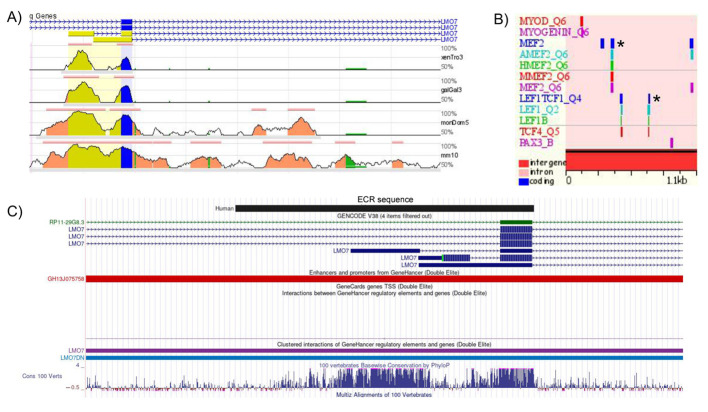Figure 9
Evolutionarily conserved region (ECR) in the LMO7 loci of human and other vertebrate species with features of a skeletal muscle-specific regulatory element. (A) Conservation profiles of the human LMO7 genomic region (base sequence, on top) in comparison with the mouse (mm10), opossum (momDom5), chicken (Galgal3) and Xenopus (XenTro3) ortholog regions. The 5′–3′ orientation of the human transcripts is denoted by arrow lines. The color codes used to indicate different gene regions are: exons (blue), 5′ UTRs (yellow), introns (pink), repetitive elements (green). Each line represents an alignment, and the vertical height indicates the sequence identity underlying the alignment. (B) The human ECR displays several potential binding sites for key regulators of skeletal myogenesis, such as PAX3, MYOD, MYOGENIN and MEF2. Two sets of the LEF1/TCF4 binding sites are predicted in the human ECR. The asterisk indicates the MEF2 and LEF1/TCF4 binding sites that are conserved in mouse, opossum, chicken and Xenopus. (C) UCSC genome browser display of the BLAT alignment of the human ECR to the human GRCh38/hg38 assembly. The human ECR sequence overlaps with the GH13J075758 promoter/enhancer of the GeneHancer catalog.

